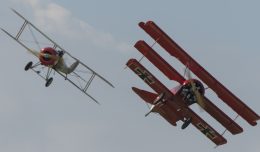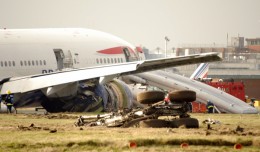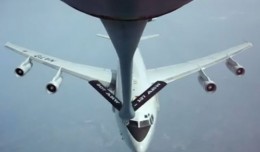An aerial pairing of the C-17 Globemaster and the KC-135 Stratotanker was the recent highlight at a media day in which journalists were afforded the rare opportunity to perform a dual flight with both the 434th Air Refueling Wing and the 445th Airlift Wing at Wright Patterson Air Force Base. The 434th’s KC-135s had been temporary relocated from Grissom Air Force Base to Wright Patterson in Ohio during an extended runway maintenance period at Grissom. Media observers were fortunate enough not only to catch two flight crews in action, but also the Aerospace Medicine Squadron and the Aeromedical Staging Squadron as well as they completed drills on the ground and in the air while during aerial refueling.
The evolution of the C-17 is a story steeped in the history of American aircraft manufacturing, starting in the 1970’s when the US Department of Defense began a search for a capable successor to the Hercules C-130. The Hercules had been in service since the 1950s (and are still currently in production). The military wanted a new aircraft maintaining all the performance and load characteristics of the C-130, but requiring half the runway length for takeoff and landing.
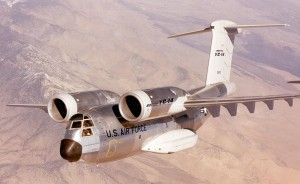 With the requirements in hand, every aircraft manufacturer sent its engineers to the drawing board, and five companies formally entered the the Advanced Medium STOL Transport (AMST) competition. Designs from Boeing and McDonnell Douglas met contract specifications. Both companies built two prototypes; the Boeing YC-14 and the McDonnell Douglas YC-15, and both companies participated in head-to-head flight testing at Edwards Air Force Base in 1976 and 1977. The verdict? The entire enterprise was deemed too expensive and the entire project was shelved. Both YC-14s still exist; one at Pima Air and Space Museum, and the other at Davis-Monthan AFB. One YC-15 remains; it was refurbished in 1997 and used for testing in the C-17 program. It is now on display at Edwards AFB.
With the requirements in hand, every aircraft manufacturer sent its engineers to the drawing board, and five companies formally entered the the Advanced Medium STOL Transport (AMST) competition. Designs from Boeing and McDonnell Douglas met contract specifications. Both companies built two prototypes; the Boeing YC-14 and the McDonnell Douglas YC-15, and both companies participated in head-to-head flight testing at Edwards Air Force Base in 1976 and 1977. The verdict? The entire enterprise was deemed too expensive and the entire project was shelved. Both YC-14s still exist; one at Pima Air and Space Museum, and the other at Davis-Monthan AFB. One YC-15 remains; it was refurbished in 1997 and used for testing in the C-17 program. It is now on display at Edwards AFB.
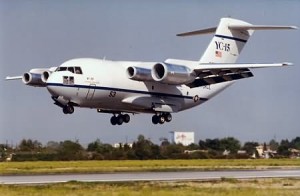 By 1980, it became increasingly clear that a Hercules replacement was needed, and the military revived the project. A call went out for contenders, and manufacturer proposals were submitted. In August 1981, McDonnell Douglas got the nod for a new-and-improved design based on the YC-15. As is often the case with all modern aircraft development, the project was plagued by budget shortfalls and development issues even after its maiden flight on September 15, 1991 at McDonnell Douglas’ Long Beach location. It was dubbed the Globemaster III in early 1993, carrying forward the name given to two previous piston-driven Douglas aircraft. The first production model was delivered to Charleston Air Force Base (now Joint Base Charleston S.C.) on June 14, 1993.
By 1980, it became increasingly clear that a Hercules replacement was needed, and the military revived the project. A call went out for contenders, and manufacturer proposals were submitted. In August 1981, McDonnell Douglas got the nod for a new-and-improved design based on the YC-15. As is often the case with all modern aircraft development, the project was plagued by budget shortfalls and development issues even after its maiden flight on September 15, 1991 at McDonnell Douglas’ Long Beach location. It was dubbed the Globemaster III in early 1993, carrying forward the name given to two previous piston-driven Douglas aircraft. The first production model was delivered to Charleston Air Force Base (now Joint Base Charleston S.C.) on June 14, 1993.
In 1997, McDonnell Douglas merged with Boeing, and the Department of Defense increased its orders over time to a total of 224 aircraft. Several international customers also came forward, including Australia, the UK, Canada, India, Kuwait, Qatar, NATO and the United Arab Emirates. Production is now slowing considerably, and Boeing expects to roll the last C17 off the line in 2015.
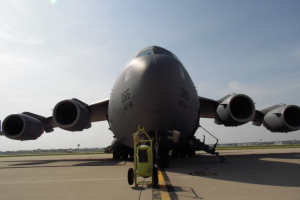 The Globemaster III utilizes the same powerful Pratt and Whitney engines found on the Boeing 757. In the civilian world, they’re referred to as PW2040s. The military designation is F117-PW-100, but by any name, it’s a powerful workhorse reliably churning out 40,400 lbs of thrust. The aircraft only needs about 20 aircraft maintenance man hours per flight hour and astonishingly little runway, as well; a combat landing (max performance, five degree glide slope) can be accomplished on a dirt runway as short as 3500 feet. Need a tight turn? The thrust reversers channel airflow up and forward to keep the engines from ingesting debris when backing it up. A tight three-point turn keeps the aircraft inside a 90-foot radius. Minimum crew requirement consists of two pilots and a loadmaster. With a max payload of 170,900 lbs, the C-17 can airdrop 102 paratroopers and their equipment in a single flight. Without mid-air refueling, it has a range of about 2400 nautical miles. Pair it with the KC-135 Stratotanker, though, and the range becomes virtually limitless.
The Globemaster III utilizes the same powerful Pratt and Whitney engines found on the Boeing 757. In the civilian world, they’re referred to as PW2040s. The military designation is F117-PW-100, but by any name, it’s a powerful workhorse reliably churning out 40,400 lbs of thrust. The aircraft only needs about 20 aircraft maintenance man hours per flight hour and astonishingly little runway, as well; a combat landing (max performance, five degree glide slope) can be accomplished on a dirt runway as short as 3500 feet. Need a tight turn? The thrust reversers channel airflow up and forward to keep the engines from ingesting debris when backing it up. A tight three-point turn keeps the aircraft inside a 90-foot radius. Minimum crew requirement consists of two pilots and a loadmaster. With a max payload of 170,900 lbs, the C-17 can airdrop 102 paratroopers and their equipment in a single flight. Without mid-air refueling, it has a range of about 2400 nautical miles. Pair it with the KC-135 Stratotanker, though, and the range becomes virtually limitless.
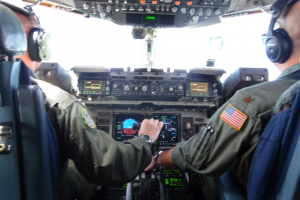 Back at Wright Patterson, members of the media departed Wright Patterson Air Force Base in a C-17 (call sign “Rhino 50”) with the KC-135 (“Mash 82”) trailing close behind. At 25,000 feet, both aircraft slowed to 250 knots. The C-17 pilot, flying the receiver aircraft, clicks off the autopilot and hand flies the approach right up behind the tanker whose pilots keep the autopilot on. The job is to stay close and steady while the Stratotanker boom operator makes contact. The level of focus is intense, and the pilots’ attention cannot wander for even a moment. Both pilots stay ahead of the controls, hands on the thrust levers, ready to make the adjustments necessary when flying a tight formation.
Back at Wright Patterson, members of the media departed Wright Patterson Air Force Base in a C-17 (call sign “Rhino 50”) with the KC-135 (“Mash 82”) trailing close behind. At 25,000 feet, both aircraft slowed to 250 knots. The C-17 pilot, flying the receiver aircraft, clicks off the autopilot and hand flies the approach right up behind the tanker whose pilots keep the autopilot on. The job is to stay close and steady while the Stratotanker boom operator makes contact. The level of focus is intense, and the pilots’ attention cannot wander for even a moment. Both pilots stay ahead of the controls, hands on the thrust levers, ready to make the adjustments necessary when flying a tight formation.
Up close, the KC-135 is quite a vision as it grows steadily larger in the windscreen until, with a satisfying jolt, the two aircraft make contact. For the sake of practice, the two aircraft tethered and disconnected a number of times over the course of the flight, offloading a total of 20,000 lbs of fuel from Stratotanker to Globemaster. For these pilots, this is a routine day at the office; the 434th has refueled well over 1800 aircraft so far and, as always, remains ready to dispatch aircraft, crews and support personnel around the world.
The author expresses gratitude to the 434th Air Refueling Wing Commander Col. Douglas Schwartz, 445th Airlift Wing Commander Col. Jeffrey J. McGalliard, the C-17 crew including Maj. Frank Saul, Maj. Jeremy Bell, Maj. William Dterling, SMSgt. Richard Stanridge and TSgt. Kimberly Boyles, and the KC-135 crew including Maj. William Schneider, Capt. Benjamin Strader, CMSgt. Jeffrey Henry and MSgt. Jerald Cummings. Thanks as well to the many other men and women of the the 434th and 445th.




